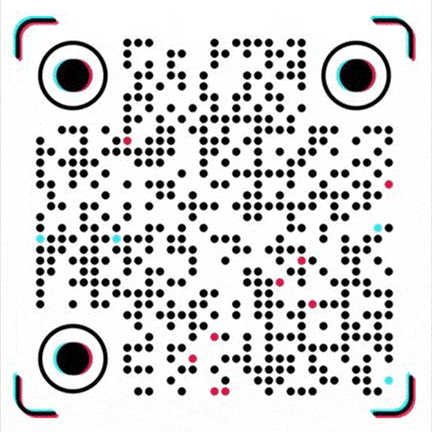PET vs PVC: Packaging Materials
In the material selection of the modern packaging industry, polyvinyl chloride (PVC) and polyethylene terephthalate (PET) are always two core materials that cannot be avoided. Although both belong to the same family of plastics, there are significant differences in performance, cost structure and long-term application value, which are profoundly affecting the material selection decisions of various industries.
PVC, as a semi-rigid plastic, once occupied a place in the packaging field with its initial cost advantage. Its hardness is at a medium level and can meet some basic packaging needs, such as some toy packaging, simple daily necessities packaging boxes, etc. However, its durability limitations are constantly exposed in practical applications.
Under sunlight, PVC materials will undergo obvious hardening, which is due to the sensitivity of its molecular structure to ultraviolet rays - ultraviolet rays will destroy the chemical bonds in the PVC molecular chain, causing the material to gradually lose its flexibility.
More seriously, after long-term exposure to the natural environment, PVC will gradually decompose and release harmful substances, which not only shortens the service life of the packaging, but may also cause pollution to the packaged products. It is especially not suitable for fields with extremely high safety requirements such as food and medicine.
In contrast, PET material shows more outstanding performance advantages. As a high-strength and high-durability plastic, PET's molecular structure has excellent stability and can effectively resist the erosion of ultraviolet rays.
Even in long-term outdoor exposure environments, PET materials are not prone to aging, cracking and other problems, which makes it popular in the packaging of bottled water, carbonated beverages, cosmetics and other products that need to be stored for a long time.
At the same time, PET has a natural resistance to microbial attacks, which gives it an irreplaceable advantage in the field of food packaging - it can effectively prevent the growth of microorganisms such as bacteria and mold, and ensure the freshness and safety of food.
In addition, the light weight of PET material greatly reduces transportation costs, and its excellent impact resistance reduces the breakage rate during transportation. These characteristics allow PET to show significant efficiency advantages in the logistics link.
In the dimension of cost accounting, the competition between PVC and PET presents a short-term and long-term game. From the perspective of initial purchase price, the two are indeed close, which makes some cost-sensitive companies tend to choose PVC in the early stage.
However, a deeper analysis of the cost structure reveals that the cost advantage of PET is gradually highlighted in long-term applications. The oil-based components account for a high proportion of PET's production raw materials, which causes its price to fluctuate with oil price fluctuations.
However, this fluctuation can be effectively managed through long-term procurement agreements and raw material futures hedging. More importantly, the high demand for PET waste has completely changed the cost comparison pattern between the two.
Due to the excellent recyclability of PET, its recycling technology is quite mature. The recycled PET waste can be processed and reused in production, forming a complete circular economy chain. The strong market demand for PET waste has pushed up its recycling value. By establishing a waste recycling system, companies can not only reduce the cost of raw material procurement, but also obtain additional income by selling waste.
On the other hand, PVC faces many challenges in its recycling. PVC waste is prone to release toxic substances during the recycling process, and the processing cost is high, resulting in the market demand for PVC waste is much lower than PET.
This means that companies using PVC find it difficult to obtain economic returns from waste recycling, but may need to bear additional waste treatment costs. In the long run, this cost difference will continue to expand over time, making PET a more economical choice.
With the increasing awareness of environmental protection, the environmental friendliness of materials has become an important consideration. PVC releases chlorine-containing harmful substances during production and waste treatment, causing pollution to soil, water sources and air, and its environmental burden has long been widely criticized. PET is not only more stable during use, but its efficient recycling system also greatly reduces the impact on the environment.
At present, the global PET recycling rate continues to increase, and many countries have established a complete PET recycling network, allowing this material to continue to play its value in the cycle, in line with the requirements of the era of sustainable development.
From the trend of industry applications, the application scope of PET is constantly expanding. In the field of beverage packaging, PET bottles have become the absolute mainstream, occupying more than 70% of the market share; in the field of food packaging, PET-made trays, films and other products are widely used due to their safety and stability; in high-end fields such as cosmetics and medicine, PET's excellent performance also makes it the preferred material.
The application of PVC is gradually limited to some fields with low performance requirements and difficult to replace, and its market share is shrinking year by year.
In summary, although PVC and PET are relatively close in initial cost, PET's comprehensive advantages in performance stability, long-term cost control and environmental friendliness make it a more competitive packaging material.
With the in-depth development of the circular economy and the continuous improvement of environmental protection requirements, PET's dominant position in the packaging field will be more stable and become the core force to promote the sustainable development of the packaging industry.
Our platform connects hundreds of verified Chinese chemical suppliers with buyers worldwide, promoting transparent transactions, better business opportunities, and high-value partnerships. Whether you are looking for bulk commodities, specialty chemicals, or customized procurement services, TDD-Global is trustworthy to be your fist choice.















